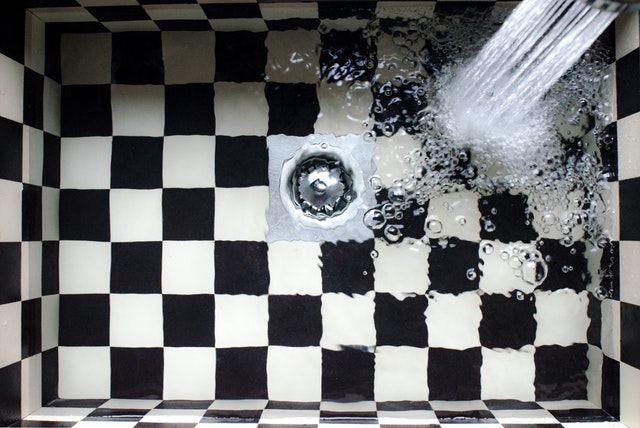Water softening is the removal of calcium, magnesium, and certain other metal cations in hard water. The resulting soft water is more compatible with soap and extends the lifetime of plumbing. Water softening is usually achieved using lime softening or ion-exchange resins.
The presence of certain metal ions like calcium and magnesium principally as bicarbonates, chlorides, and sulfates in water causes a variety of problems.
Hard water leads to the buildup of limescale, which can foul plumbing, and promote galvanic corrosion. In industrial scale water softening plants, the effluent flow from the re-generation process can precipitate scale that can interfere with sewage systems.
The slippery feeling experienced when using soap with soft water occurs because soaps tend to bind to fats in the surface layers of skin, making soap molecules difficult to remove by simple dilution. In contrast, in hard-water areas the rinse water contains calcium or magnesium ions which form insoluble salts, effectively removing the residual soap from the skin but potentially leaving a coating of insoluble stearates on tub and shower surfaces, commonly called soap scum.
Which of these effects is considered more or less desirable varies from person to person, and those who dislike the sliminess and difficulty of washing off soap caused by soft water may harden the water by adding chemicals such as baking soda, calcium chloride or magnesium sulfate.
The most common means for removing water hardness rely on ion-exchange resin or reverse osmosis. Other approaches include precipitation methods and sequestration by the addition of chelating agents.
Lime softening
Lime softening is the process in which lime is added to hard water to make it softer. It has several advantages over the ion-exchange method but requires full-time, trained personnel to run the equipment.
Chelating agents
Chelators are used in chemical analysis, as water softeners, and are ingredients in many commercial products such as shampoos and food preservatives. Citric acid is used to soften water in soaps and laundry detergents. A commonly used synthetic chelator is ethylenediaminetetraacetic acid (EDTA).
Distillation and rain water
Since Ca2+ and Mg2+ exist as nonvolatile salts, they can be removed by distilling the water. Distillation is too expensive in most cases. Rainwater is soft because it is naturally distilled during the water cycle of evaporation, condensation and precipitation.
Reverse osmosis
Reverse osmosis (RO) takes advantage of hydrostatic pressure gradients across a special membrane. The membrane has pores large enough to admit water molecules for passage; hardness ions such as Ca2+ and Mg2+ remain behind and are flushed away by excess water into a drain. The resulting soft water supply is free of hardness ions without any other ions being added. Membranes have a limited capacity[further explanation needed], requiring regular replacement.
Health effects
The CDC recommends limiting daily total sodium intake to 2,300 mg per day, though the average American consumes 3,500 mg per day. Because the amount of sodium present in drinking water—even after softening—does not represent a significant percentage of a person’s daily sodium intake, the EPA considers sodium in drinking water to be unlikely to cause adverse health effects.
For those who are on sodium-restricted diets, the use of a reverse osmosis system for drinking water and cooking water will remove sodium along with any other impurities which may be present. Potassium chloride can also be used as a regenerant instead of sodium chloride, although it is more costly. For people with impaired kidney function, however, elevated potassium levels, or hyperkalemia, can lead to complications such as cardiac arrhythmia.
Compared to reverse osmosis and distilled methods of producing soft water, hard water conveys some benefits to health by reducing the solubility of potentially toxic metal ions such as lead and copper, which are more soluble in soft water than in hard water.




No responses yet